Anchoring a retro hotspot in the old downtown of Seoul, record
shop owner Hwang Seung-soo presents an array of old albums,
cassettes and CDs that refresh old memories and spin new ones.
It’s after sunset, time to relax. Hwang Seung-soo shutters his modest record store, cues up his crafted playlist, turns off the lights – and leaves. In the next fourplus hours, songs of the past will serenade a worn but bustling precinct, eliciting knowing smiles and curious glances.
Situated in Seoul’s Jongno 3-ga, Hwang’s shop, Seoul Record, feels both familiar and unfamiliar, old and new.Now in its 45th year, the shop welcomes young customers who leaf through faded LP records, cassettes and compact discs, seeking hit music from before they were born.In another corner, older customers reconnect with the soundtracks of their youth. All of them rummage through the shop, some 140 square meters in floor area, with as much intention to collect as to listen.
Hwang is the fourth owner, the latest in a succession of former employees turned proprietor. He is slightly bemused that Seoul Record still exists. The advent of music streaming turned vinyl records, cassette tapes and compact discs into unnecessary clutter. Nevertheless, the music store keepsits steady beat, boosted these days by a retro trend that has grabbed onto songs from past singers, alongside resurrected bygone clothing styles, cafés with old furniture and other reminders of the past.
“Back in my day, finding music we liked and listening to it was really important. Now, though, with smartphones and streaming services, you can easily listen to anything, anywhere,” says Hwang. “So it was looking like the end of the record industry. But now, we have these people who want to collect and own the records themselves, not just listen to what’s on them.“Just the picture of the album cover floating on the screen of their smartphone, that’s not enough for them.
That’s why they buy the LP, right? It startled me, too, actually, the first time I saw these young people come in and get all excited about the way the needle sounds, skipping and landing on the vinyl.”
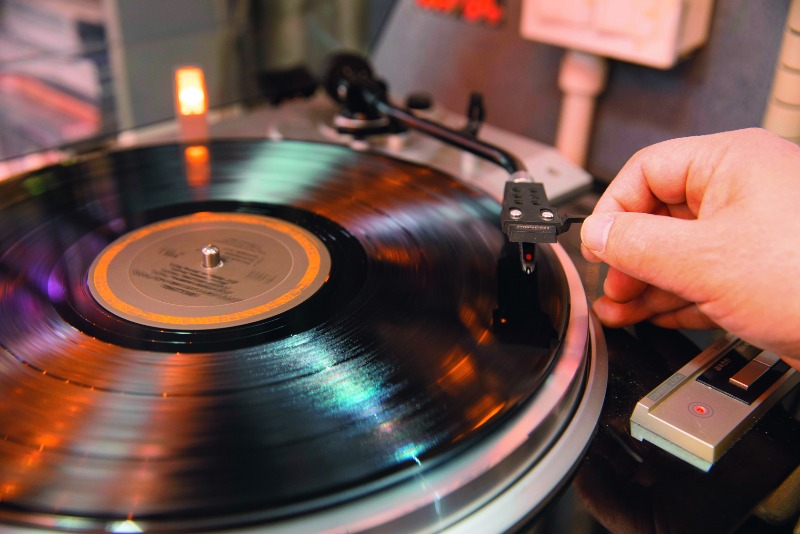
The moment the needle drops on a vinyl, Seoul Record harkens to a different era. The sound is scratchy rather than clean, yet this scratchinesshelps solidify a nostalgic vibe that reverberates every day.
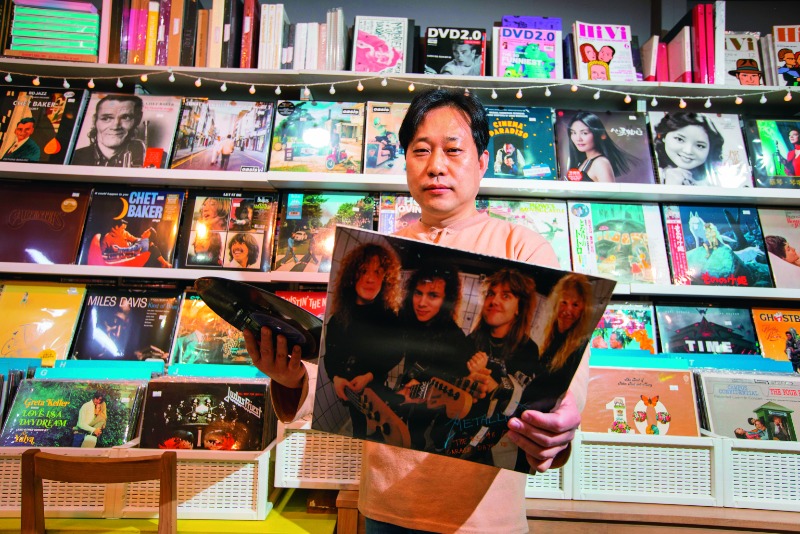
Shop owner Hwang Seung-soo keeps his multi-generational customer base supplied with a myriad of genres, including classical, jazz,traditional Korean gugak, rock, movie soundtracks and K-pop.
Changing Hands
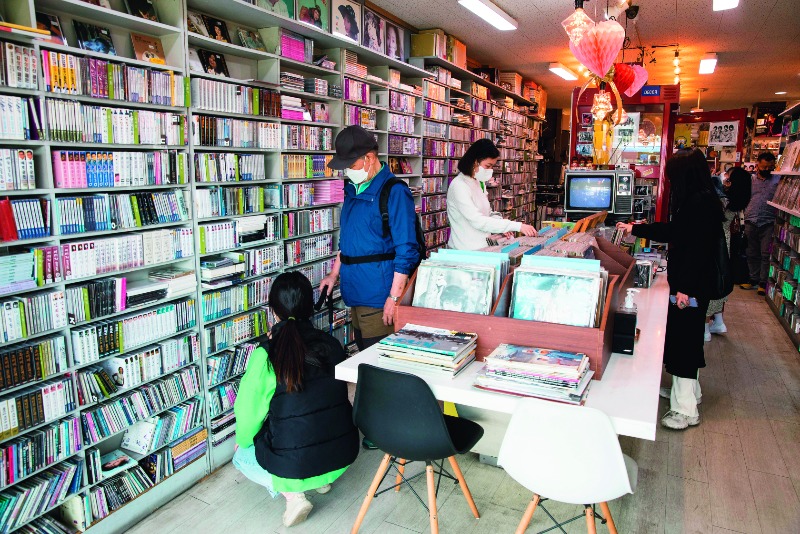
Caught up in a retro boom, Seoul Record is constantly packed. Some come to rekindle memories, others to soak in the charms of analog sentiment.
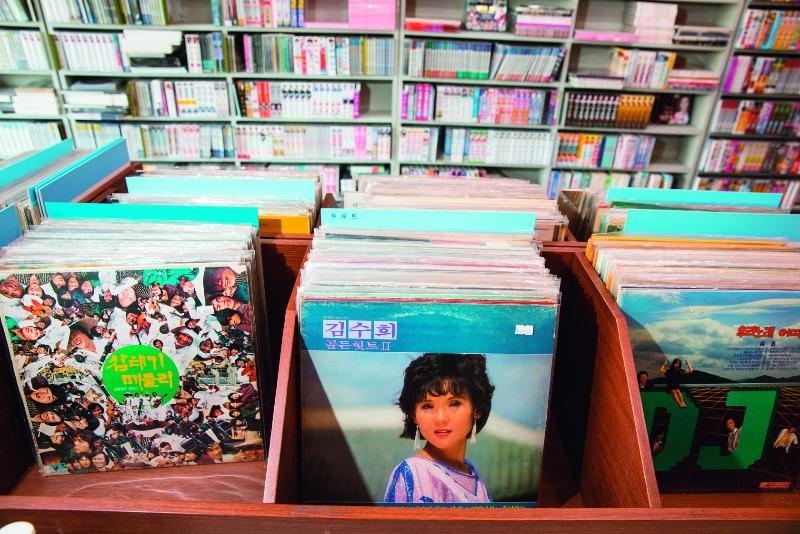
Vinyl records are sought as collectibles after being pushed aside for decades by compact discs, then MP3s and digital streaming.
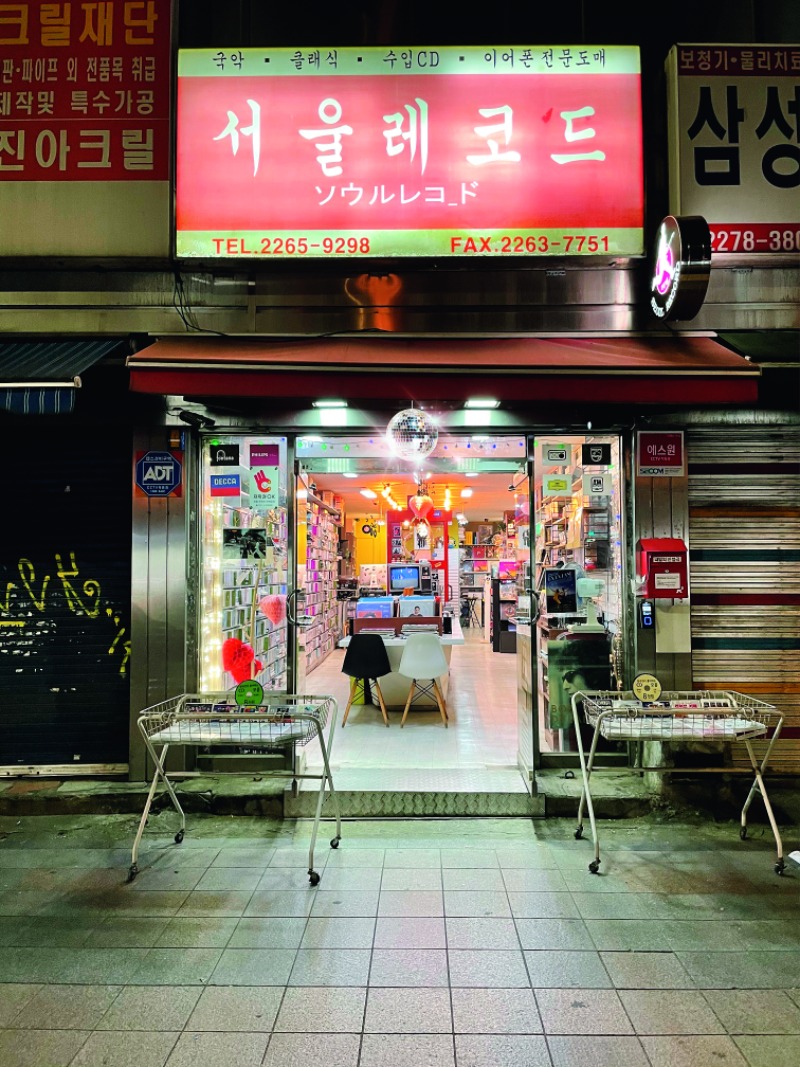
A recent facelift has given the interior of Seoul Record a modern look in the heart of old downtown Seoul. A song request put in the red mailbox will be played at night after the shop closes. © Gian
“The shop’s first owner ran the place until 2000, when MP3s came out and it just became impossible to stay in the black.This was still a time when records were for listening to, rath-er than collecting, and so people just stopped buying them,” says Hwang.
The start of hallyu, the Korean Wave, generated international customers, helping keep the store afloat, but by 2015, the third owner decided he’d had enough, too.
Hwang was in his early 40s and had worked at the shop for three years. He had always dreamed of becoming acomic book artist, but now married and starting a family, he had to be practical about time spent and income earned. Hedecided to put his chips into work that he knew well rather than a job he thought he might like.
“My older brother ran a video distribution company.Distribution structures for VHS tapes, CDs and DVDs are all connected to one another. My first real experience withmusic happened by chance as a kid, when my dad brought home a record p one day. And as a teen, I’d even taggedalong with my older brother to a record company. Along the way, I got to know this world pretty well.”
When Hwang started working at Seoul Record, the average age of its customers was well past 50. The shop is located in one of Seoul’s oldest neighborhoods, with a sizeable elderly population. Behind Seoul Record is Sewoon Plaza,Korea’s first commercial/residential mixed-use complex, built in 1968; across the street is Jongmyo, the royal ancestral shrine established in 1394 to honor the kings and queens of the Joseon Dynasty; and next door is Tapgol Park, formerly known as Pagoda Park, the country’s first-ever city park, built in 1897. Customers in their 40s and 50s looking for LPs were easily outnumbered by the elderly, who usually searched for cassette tapes. Then, all of a sudden, everything veered.
Overnight, the neighborhood became the latest hotspot for trendsetters, nicknamed Hip-jiro. Both Koreans and foreigners descended upon nearby traditional Korean houses, or hanok, turned into stylish coffee shops. Vinyl records,decades removed from the music industry, became s of value, and the average age of the shop’s customers started to fall.
Sharing Stories
These days, it’s not one specific generation that seeks out the shop, but rather a wide range of all ages. Daughters bringtheir fathers, sometimes, and parents bring their children, all eager to hear and share the music they love.
In a way, one could say that these customers are coming to find memories, not s. In an unfamiliar world, we search out the familiar; in a familiar world, we look for something new.
“Sometimes there are people who need help finding a song – something they loved when they were young, say, and they’ll remember a bit of the lyrics and some of the melody, but not the actual title. Often, they’re a lot older, living alone and not good at using computers. And when we sleuth around a bit and find it for them, they’re just so moved. It’s a good feeling.”
One customer wanted help finding a song by a band that was big in the 1960s. When Hwang found it and put it on, hewas startled to find that the customer’s voice, singing along, was incredibly similar to the voice on the record. When heasked the customer whether he was the singer himself, he admitted that he was. He had been looking for the LP for awhile, he explained, because he’d wanted to hear the song again, but hadn’t been able to find it until then.
“There’s another customer who’s lived in this neighborhood since he was a child. His family had trouble making ends meet, and so instead of going to school, he worked a job putting up movie posters around town. He loved movies so much, he skipped meals to go see them.”
Listening to and sympathizing with the long, complicated personal stories of strangers isn’t always easy. It’s only possible, in fact, if one can call upon a genuine interest, affection and trust for people writ large. Many, having initially arrived as customers, leave as something more, something warmer, after sharing their treasured stories – and come back later with gifts of candy or tangerines, or maybea soft drink or two.
The shutter of Seoul Record goes up between nine and ten in the morning, Monday through Saturday. Hwang’s wifeopens the shop, and Hwang himself arrives between noon and 1 p.m. to take over until closing at 7:30, or a bit laterif business is slow. When the shutter finally comes down, Hwang commences the last phase of his day: “Tomorrow’s Song Request.”
“There’s a red mailbox out in front of the shop. If people write down a song request and put it in, we play the song for them.”
Playing Requests
Throughout each day, Hwang compiles a file of songs that blend well, including the requests that have come in, thenleaves it playing after the store closes. Most of the requests are for old lyrical songs or hit pop songs. Hwang’s ownpicks run the gamut of genres and sometimes mesh with the weather or season. Asked to name his favorites, he says, “Ilike it if it’s the music you like.”
Until midnight, the music floats out onto the sidewalk and eight-lane street before the store. A stream of pedestrians going to and from the nearby Jongno 3-ga subway station and various coffee shops and restaurantsan audience in motion. Sometimes, a passerby will slow down andstop to sing along or even dance a bit. In the dark evening streets, it’s a sight that makes one think that life really doesjust find its way in the end.
“I didn’t get into this line of work to try and make my fortune,” says Hwang. “It’s not so bad, keeping things afloatand listening to the music I love every day. I get to spend my days enjoying this place, and the customers get to come andfind the music they’re looking for.”
Hwang Kyung-shin Writer
Ha Ji-kwon Photographer